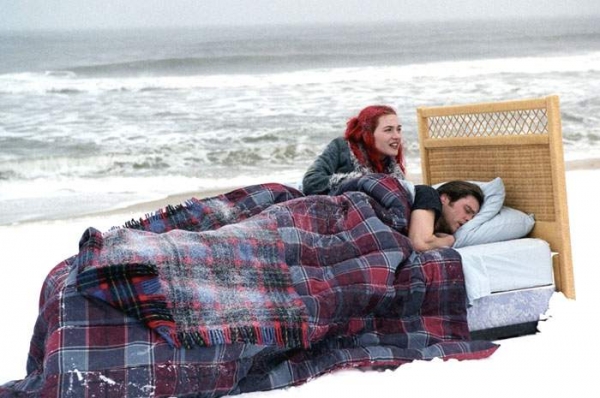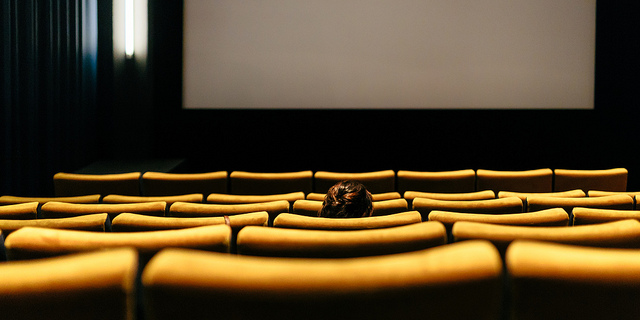Image: arianta
So, it turns out that writing up your lab report dissertation and revising for final year exams takes up a lot of time, energy and sanity. Who knew? However, if you can excuse that, some good has come out of the recent months of radio silence in which this blog has been gathering a fair bit of Internet dust and resident tumbleweeds. Because, as any student knows, with great obligation comes procrastination, and if you live in a house of neuroscientists this apparently means watching as many films as you can find which are at least sort-of neuroscience-related (because ‘it’s not really procrastinating if it’s got brains in it, is it?’) What with the human brain being so baffling and in many aspects not completely understood, there’s a lot of room to get creative. Unsurprisingly, this means there are a lot of films out there with various takes on what’s going on up there: from more personal and historical stories of neurological disease to playing around with the endless sci-fi ‘what-if’ scenarios the brain provides. So, without further ado, here are a selection of the weird and wonderful movies we unearthed over the last couple of months in Revision Cave, which I thought I’d share. And of course it goes without saying, feel free to leave any recommendations and suggestions of your own…my next blog post isn’t going to procrastinate itself!
Awakenings
Starring: Robert De Niro & Robin Williams (1990) 
If, like many people (including me) you thought Eddie Redmayne did an incredible job of portraying Stephen Hawking in 2014’s The Theory of Everything, then Robert De Niro is comparatively outstanding here. Awakenings is an adaptation of late and great neurologist Oliver Sacks’ written account of his time working with ‘catatonic’ encephalitis epidemic victims at the Beth Abraham Hospital, New York in the 1960s. De Niro is initially unrecognisable as Leonard: wheelchair-bound, mute and – like the rest of the patients consigned to the bluntly-named ‘garden ward’ – unable to move, frozen in a Parkinson’s disease-like state. The transformation from living statue to being fully mobile and dancing, thanks to receiving Parkinson’s disease drug L-DOPA, is remarkable (this might just be me and my own general ignorance, but I genuinely didn’t realise it was De Niro until this point!) Awakenings’ account of individuals being brought back to life after being given up on is an honest and unexpectedly funny film definitely worth checking out, but be warned: the laughs and light-hearted recovering-patient-montages only last as long as it takes for the L-DOPA to wear off…
The Science of Sleep
Starring: Gael Garcia Bernal & Charlotte Gainsbourg (2006) 
The phrase ‘there are no words’ springs to mind, however, I’ve decided to think of some to describe what is possibly one of the most bizarre films I’ve seen. Ever. The Science of Sleep ostensibly is the story of Stéphane Miroux (Gael Garcia Bernal), who moves to his mother’s apartment block in Paris after his father’s death, and takes a shine to the quirky, arty girl next door (Charlotte Gainsbourg). So far so cliché, I’m sure you’re thinking. However, the major draw-back here is that, like Stéphane, we’re never quite sure if what’s happening is a dream or reality. The opening scene: a TV studio constructed entirely from cardboard (even the cameras) from which Stéphane presents ‘StéphaneTV’, pretty much sets the tone for the rest of the film from the off. Although it later transpires that this cardboard studio cleverly represents the inner workings of Stéphane’s brain reacting to unfolding events (imagine Inside Out but with cardboard and a strange middle-aged French guy and you’re not far off). The rest of the film unfolds in a mix of French, English and occasional Spanish (because why not?!) accompanied by creative, but disorientating, stop-motion and visual effects intruding just when you thought you’d found a scene that was ‘definitely really happening.’ Overall, this is definitely a Marmite kind of film, which has a lot of fun playing around with dreams vs. reality: think Inception on a tight budget. However in its defence, The Science of Sleep did successfully lure me into watching the entire thing, in the bewildered hope that at some point – the next bit, surely – I would figure out what exactly I was watching. Of course, this never happened. So the best way to describe this film, I feel is: ‘just watch it and see?!’
The Eternal Sunshine of the Spotless Mind
Starring: Kate Winslet, Jim Carey, Mark Ruffalo, Elijah Wood, Kirsten Dunst (2004) 
Possibly a bit late to the party with this movie, as it’s probably one of the more well-known ones on this list. Nonetheless, The Eternal Sunshine of the Spotless Mind is a fun foray down the rabbit-hole of human memory. In a nutshell: boy meets girl, boy likes girl, girl likes boy, they inevitably break up and decide to erase the memory of each other from their brains. However, as opposed to listening to copious amounts of Adele and drinking yourself into oblivion, they decide to achieve this via a conveniently-available medical procedure. Whilst reliving his memories as they’re being demolished, Joel (Jim Carey) changes his mind and decides that actually he doesn’t want to forget Clementine (Kate Winslet), and so a frenzied dash through fragmented memories ensues, as he attempts to wake himself up. Whilst it’s got a lot of odd quirks, what’s interesting about Eternal Sunshine is the way it plays around with memory and how, quite often, what we remember is not necessarily always exactly an accurate representation of events. At the beginning things are somewhat hectic, jumping back and forth between past and present, eventually the story pieces together and allows you to figure out just what on earth is going on. Overall, it’s a cleverly back-to-front kind of film, which you’ll either find satisfying or frustrating, depending on who you are – but either way, it’s worth a watch.
The Music Never Stopped
Starring: J.K. Simmonds, Lou Taylor Pucci, Cara Seymour (2011) 
This is yet another, more recent, adaptation of the writing of Oliver Sacks – this time of the case study: The Last Hippie. The story follows a young man who, due to a brain tumour, suffers anterograde amnesia and is unable to remember anything after the late 1960s or form new long-term memories. However, by focusing on music, and the memories certain songs are strongly tied to and able to evoke, Gabriel (Lou Taylor Pucci) is gradually able to connect with his estranged family. The Music Never Stopped is a sincere, heartfelt film which highlights just how far we still have to go to understand how human memory works (the music therapist in the film has some debatable ideas, but then most of what we understand about memory is debatable and the film is set in the 80s…). Nonetheless, it’s an enjoyable watch – if only for the great soundtrack – with plenty of laughs along the way.



